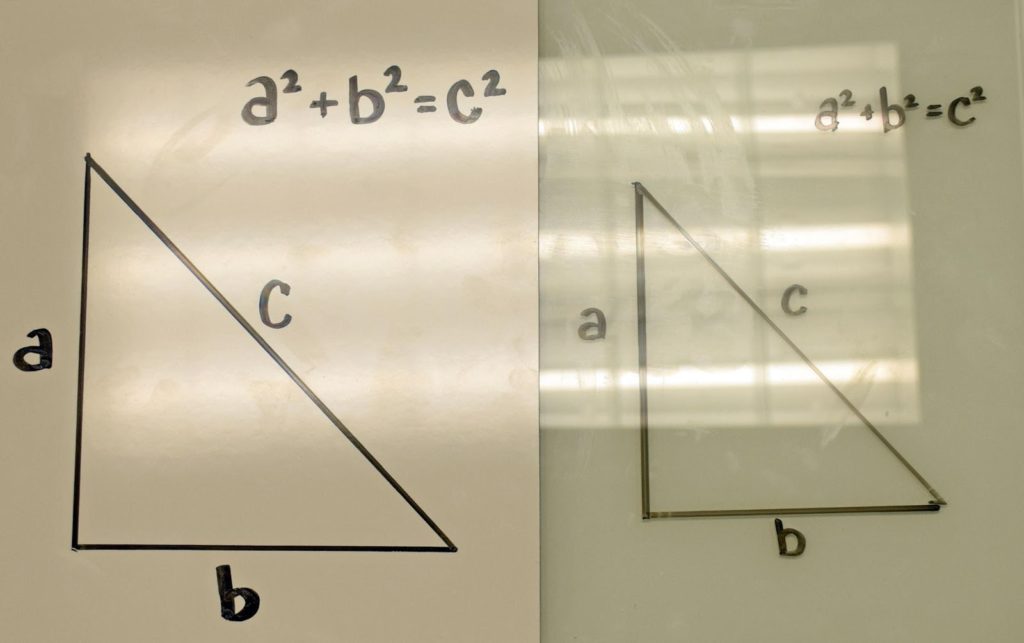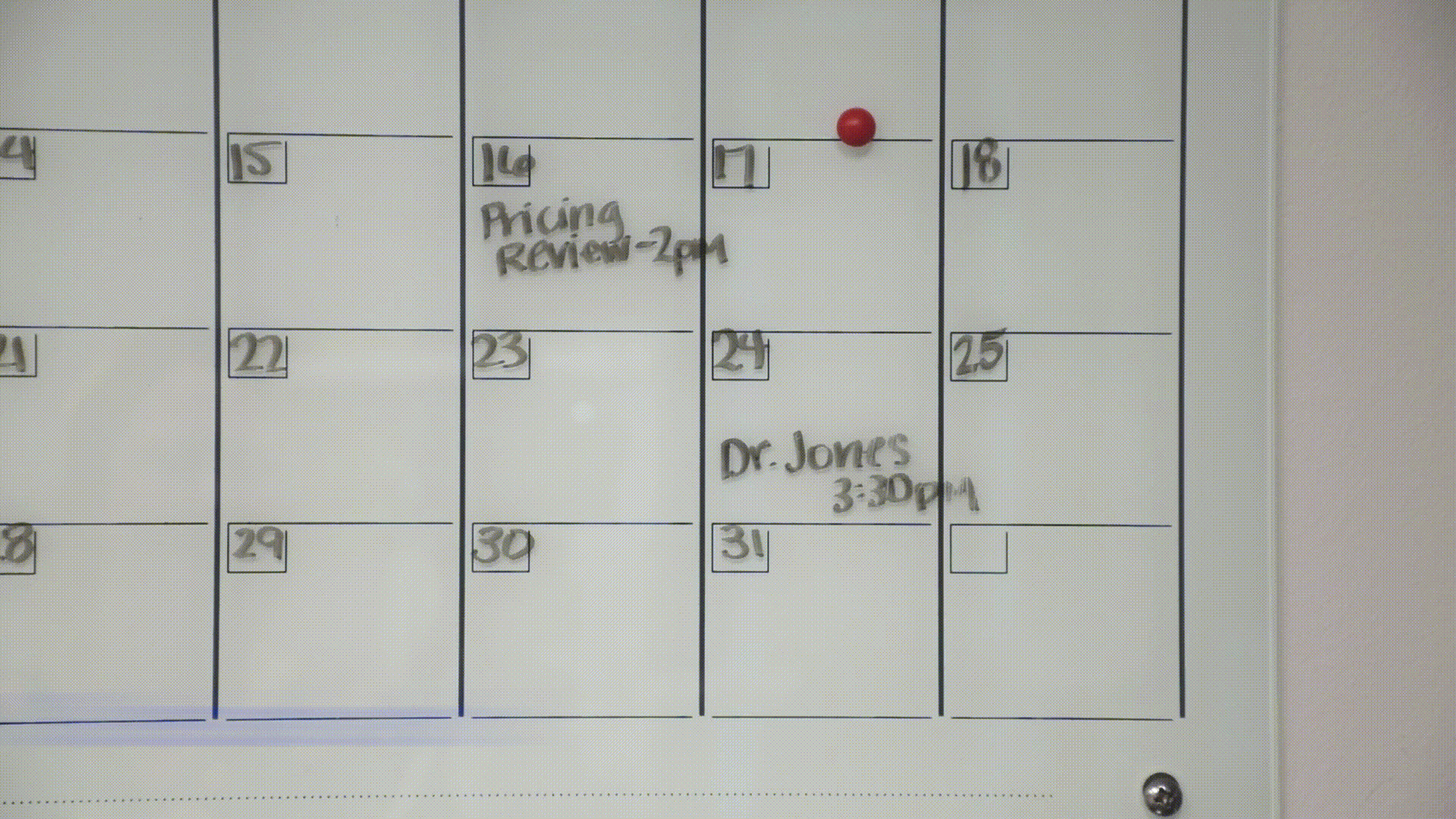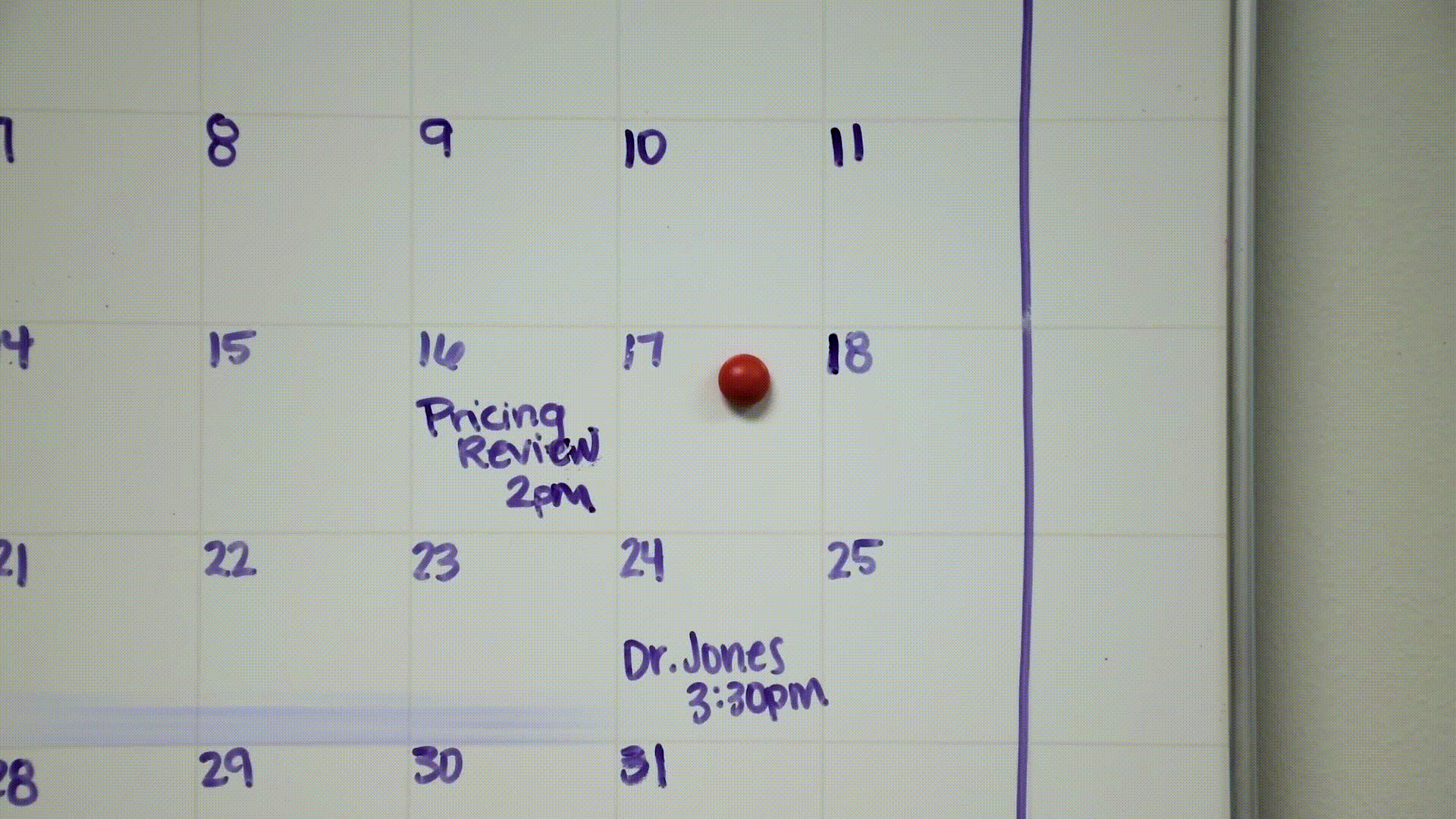The invention of the chalkboard in 1801 fueled a new way of learning and collaborating. Over 200 years later, there is an entire market dedicated to writing surfaces – including chalkboards and whiteboards – made of materials ranging from glass and CeramicSteel to melamine and paint. With this sweeping variety, navigating the choices can be a challenge. Understanding the importance of selecting the correct writing surface to meet the needs for each space, we took a closer look at two of the highest performing options available: glassboards versus CeramicSteel, also known as porcelain enamel (or vitreous enamel), which gets its smooth surface from melted glass particles.
Visibility
Writing surfaces like whiteboards are typically used in large spaces with the purpose of sharing information among a group of individuals. For the surface to be effective, writing must be easily observed from both close and distant proximities. CeramicSteel writing boards provide sharp contrast between the marker ink and the surface with crisp lines, regardless of the color of the board.
Glass marker boards produce a diminished viewing experience for a number of reasons. The transparency of glass yields to a “drop shadow effect,” which translates to a double vision or blurred appearance from the shadow of the marking. Since glass is transparent, it has two reflective panes, as incoming light not only reflects off the front surface but also off the back surface.
Glare
An additional factor to consider when thinking about visibility is glare caused by light reflecting from a writing surface from sources like sunlight through windows, overhead lights, lamps and projectors. Glare can inhibit the visibility of a vertical plane, making it difficult to see what has been written; severe glare can even cause eye strain, making extended exposure uncomfortable.
CeramicSteel and glass are both a smooth, glossy surface, from which a certain level of light reflection will occur. CeramicSteel, however, comes in a variety of finishes from high gloss to matte. These all reflect less severely than glassboards, which emit a high level of glare – enough to not only make it difficult to capture photos of notes and brainstorming sessions for future reference, but to cause poor visibility in any reflective light. In fact, CeramicSteel is 58.8% less reflective than glass according to an internal study.
Magnetic Properties
A writing surface on a vertical plane is much more than a medium for lectures and team collaboration. It is a catalyst for teachable moments, vision-boarding, important announcements and community information-sharing. If an important document, memo or list needs to be displayed, there is no better place to affix it than to the collaborative hub that is the whiteboard.
CeramicSteel, essentially porcelain enamel fused to a high-quality steel backing, has strong magnetic capabilities. Everyday magnets can be used on CeramicSteel marker boards to securely attach anything from weekly lunch menus to corporate announcements to the surface.
By comparison, glassboards are not always magnetic. When they are, expensive rare earth magnets are usually required to achieve the strong magnetic surface necessary to keep items from sliding down the board. This limitation can greatly inhibit a glass board’s versatility.
Shipping + Installation
The shipping method for CeramicSteel and glass differs as well. CeramicSteel can be shipped horizontally while glass must be shipped vertically due to the higher likelihood of breakage when shipped horizontally. Unfortunately, shipping items vertically is a costly requirement that can increase the overall cost of glassboards for the end consumer.
Proper installation is essential for any wall fixture, especially those that are heavy and experience significant daily use. CeramicSteel and glass boards are no exception. CeramicSteel boards feature a straightforward installation process and weigh less than glass boards.
Both CeramicSteel and glassboards require 2-person installation. CeramicSteel boards are typically installed with a straightforward hidden track system where hardware is mounted to both the board and the wall. Glassboards are usually installed with an anchored stand-off system for which the hardware must pass through the glass, or the glassboard must be mounted with adhesive.
Safety
Used in classrooms, busy corporate offices and public spaces, a writing surface must stand up to heavy use and a certain level of rough treatment. Durability is a prerequisite for any high-performance writing surface intended as a lasting investment.
CeramicSteel will not shatter or break upon impact or when dropped unlike glass, which can break into shards when dropped. The porcelain surface is reinforced with steel, resulting in a material designed for heavy use and the survival of accidents. Glassboards, while more durable than regular glass, will still crack or shatter under substantial pressure or upon impact, resulting in a safety hazard during shipping, installation and use.
Traditional whiteboards are synonymous with modern education and an essential part of the learning process. CeramicSteel writing surfaces can be found in more than 25 million classrooms, and impact spaces around the globe – deeply trusted as the surface of choice for both the classroom and the workplace.




